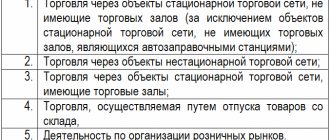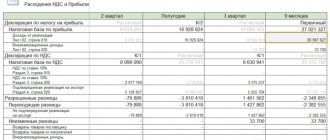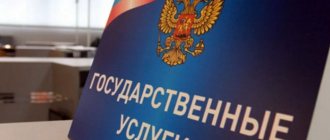According to the Federal Law of July 26, 2019 No. 210-FZ, on January 1, 2020, changes to Chapter. 25 of the Tax Code of the Russian Federation for autonomous institutions carrying out educational and (or) medical activities, as well as for museums, theaters, libraries and institutions providing social services to citizens.
- Main changes for AU
- “Zero” rate for medical and educational institutions
- Benefits for social service institutions
- Benefits for museums, theaters and libraries
Income tax benefits for organizations: medical and educational
Benefits for educational and medical organizations are valid until 2022 inclusive.
Conditions for providing a zero rate:
- Inclusion in a special list that does not include services related to sanitary treatment.
- Availability of a license for the relevant type of activity.
- Provision of services subject to preferences in a volume of at least 90%.
- The number of employees during the year is at least 15.
- Possession of a special certificate for at least 50 employees per year.
- Absence of bill transactions and fixed-term contracts.
Preferences for social organizations and cultural institutions
For organizations providing social services to the population and cultural institutions, the tax exemption is valid until January 1, 2022.
Conditions of release:
- Compliance of the services provided with the approved list.
- Entry into the regional register of organizations providing social services.
- Presence of at least 15 employees on staff for one year.
- The presence of turnover of social services is no less than 90%.
- Absence of bill transactions and fixed-term contracts.
In addition, the following benefits are provided for budget-supported theaters, museums, concert and library organizations:
- Instead of charging depreciation, they can write off expenses that are incurred during business activities as a lump sum.
Such expenses include:
- expenses for the purchase or creation of objects subject to depreciation;
- expenses for reconstruction, modernization, technical re-equipment of operating systems.
The exception is real estate.
The Tax Code of the Russian Federation identifies a number of objects that are not subject to depreciation by cultural institutions, among which, for example, there are objects and works of art, books.
- They do not calculate and are not subject to payment of advance payments on profits.
- The tax return is submitted only at the end of the year.
Conditions for receiving benefits
In accordance with paragraph 1 of Article 284.1 of the Tax Code of the Russian Federation, organizations engaged in the field of education can apply a profit tax rate of zero percent. The list of types of educational activities for which the benefit applies is approved by Decree of the Government of the Russian Federation dated November 10, 2011 No. 917. In this case, the organization must meet the following conditions:
- have a license to carry out educational activities, issued in accordance with the legislation of the Russian Federation;
- income from educational activities must be at least 90 percent for the tax period, or absent altogether;
- during the tax period, at least 15 employees must be continuously employed;
- not to carry out transactions with bills of exchange and financial instruments of futures transactions during the tax period.
To receive the benefit, an educational institution must submit an application and a copy of the license to the Federal Tax Service at the place of its registration one month before the start of the tax period. It should also be borne in mind that along with the annual income tax return, it is necessary to submit information about the share of income from educational activities and the number of employees in the state.
Benefits for small businesses and private entrepreneurship
Small businesses and private entrepreneurship can count on tax benefits under the following conditions:
Small businesses
Enterprises included in the list of small ones must meet the following basic criteria:
- The authorized capital, in which the participation of the Russian Federation, as well as organizations related to public, religious and charitable organizations, does not exceed 25%.
- The participation of enterprises that are not small should also be no more than 25%.
- The number of employees per year in the agricultural sector cannot be more than 60 units, and among builders and industrialists - more than 100.
Small enterprises are exempt from income tax for two years if they:
- They combine production and processing of agricultural products.
- They produce food, consumer goods, building materials, medical equipment, medicines, and are engaged in construction and repairs.
- Income from these activities accounts for more than 70% of total revenue.
Then the conditions change. Two out of three indicators remain the same, but the requirements for revenue volume increase. Read also the article: → “The procedure for calculating and paying income tax under the simplified tax system”
If the eligible revenue reaches more than 90% of the total, then:
- in the third year of operation, the percentage of the income tax rate will correspond to 25%,
- on the fourth – 50%.
Individual entrepreneurs
Although this group does not pay income tax, it is worth mentioning the benefits provided to it.
In the period of time limited to January 1, 2015 and December 31, 2022, private entrepreneurs who first started operating can take advantage of tax holidays for two tax periods. The income tax rate for them will be 0%.
Conditions for granting preferences:
- Registration for the first time after the entry into force of the law of the subject.
- Mode – patent or simplified system.
- Compliance with the types of activities specified in regional laws.
Interest rate of income tax for budgetary enterprises
The basic income tax rate is 20%. Educational and medical institutions have the right to apply a zero rate to the tax base, unless other rates are established for the tax base in accordance with paragraphs 3, 4 of Art. 284 of the Tax Code of the Russian Federation, and subject to the conditions of Art. 284.1 Tax Code.
The main requirement for applying the 0% rate is receiving income from the provision of educational/medical services, research in the field of science, and the creation of experimental developments. Moreover, the share of revenue from carrying out the listed types of activities should be no less than 90% of all earnings. Even if the share is 89.9%, income tax will have to be paid.
Tax breaks for organizations with the participation of people with disabilities
An organization of people with disabilities will be recognized as such if:
- Its members include no less than 80% disabled people, including persons representing them in accordance with the law.
- The authorized capital is formed from contributions from public organizations with the participation of people with disabilities.
- The average composition of working disabled people includes no less than 50%.
- The component of the wages of disabled people in the general wage fund is no less than 25%.
Subject to these conditions, such an organization, as a non-profit organization, may not include in the profit base:
- entrance and membership fees;
- targeted revenues;
- donations;
- free services;
- inheritance;
- funds allocated from the budget related to the implementation of statutory goals;
- property, including money, and rights to it, granted for charitable events.
In addition, organizations with the participation of people with disabilities receive government support aimed at the social protection of their members:
- Art. 264 of the Tax Code of the Russian Federation indicates the composition of special expenses associated with such protection (for example, the manufacture and repair of prostheses, treatment, training and employment). They can be used to reduce profits subject to tax.
- The right is granted to create a reserve for such expenses for five years.
Profit benefits for participants of special economic zones
A special economic zone is a territory where special preferential conditions for activities apply.
Among these zones are:
- Technology and innovation, according to which the tax break on profits is valid from 2012 to 2022 inclusive.
- Tourist and recreational, with tax preferences from 2012 to 2022 inclusive.
Enterprises located in such zones connected in a cluster apply a rate corresponding to 0% in the part sent to the federal budget. The condition is to maintain separate records of activities carried out inside and outside the specified zones.
Tax benefits for innovative enterprises
There is also a system of tax incentives for innovative enterprises:
RIP participants
Starting in 2022, participants:
- investment projects at the regional level (RIP) and
- special investment contracts, where Russia is one of the parties, receive benefits relating to both the federal - 0%, and regional - 0% and 10% of the budgets.
RIP participants are completely exempt from profit deductions to the FB.
They are entitled to a tax benefit when they:
- indicated in a special register;
- receive revenue from the sale of goods provided for by these projects, amounting to at least 90% of the total income.
The preferential rate for the regional budget is subject to application for 10 tax periods, starting from the period of receiving the first profit from the specified goods:
- Those participants who implement RIPs in the Far Eastern Federal District and 6 regions of the Siberian Federal District, in the amount of 0%. They also enjoy benefits immediately after submitting an application, without registering in the register, if they have already made capital investments in the required volumes.
- Participants in investment contracts - in the amount of 0%.
For RIP participants located outside of these regions, the tax may be reduced to 10%.
As for regional benefits, then:
- the rate should not be higher than 10% for 5 tax periods from the beginning of the sale of goods;
- cannot be less than 5% in the next 5 periods.
The benefit is valid until January 1, 2027.
Skolkovo
Organizations that have received resident status of the Skolkovo project are completely exempt from tax for 10 years.
They carry out research, development and commercialization of projects. We are talking about profit that was received after the participant stopped using benefits in accordance with Article 246.1 of the Tax Code of the Russian Federation.
The restriction regarding profits exceeding 300 million rubles and (or) a project participant who has lost their status does not apply to profits received from 01/01/2017 to 12/31/2022 inclusive.
Innopolis
"Innopolis" is a special economic zone located in the Republic of Tatarstan, among other technology-innovation zones, has tax preferences indicated in the table:
| FB | RB |
| 0% – until 2022 | 0% – first 5 years |
| 3% – from 2022 to 2022 | 5% – next 5 years |
| 2% – from 2022 | 13.5% – after 10 years |
The duration of the benefit is equal to the life of the zone and is 49 years.
Example of income tax calculation
Almaz LLC, a developer of information and communication technologies, has been registered in the Innopolis zone since 2022. The profit he received in the 1st quarter amounted to 9 million rubles. The tax rate until 2022 within both budgets is set at 0%. Income tax – 0%.
Also, a tax break is the ability to attribute expenses on research and development work (including those carried out with a negative result) in the amount of actual expenses during the period of their implementation.
Directory of investment tax incentives
The state is introducing investment tax incentives to attract business and money to the regions. After all, all these benefits are regional. However, for business, regional tax advantages are not obvious.
In addition, possible tax savings are offset by the complex procedure for obtaining them.
But even for those taxpayers who have received the benefit, it is not always easy in the future to confirm to the tax authorities and regional administration the legality of its use.
We tell you what benefits we are talking about and how an investor can use them to save taxes.
Special investment regimes
There are several preferential investment regimes:
- special investment contract (SPIC);
- regional investment project (RIP);
- territory of priority socio-economic development (PSED);
- investment tax deduction (INV).
Income tax. The income tax rate in the part subject to credit to the regional budget can be reduced to 12.5 percent. The benefit is established by the constituent entities of the Russian Federation. The procedure for its application is clear and in many ways familiar to most taxpayers.
However, with the adoption of changes to tax legislation in 2022, such a rate reduction is possible only until January 1, 2023. After this date, it will be possible to use the reduced rate only within the framework of special investment regimes and instruments. Moreover, within the framework of such regimes and instruments, it is possible to reduce the tax rate to the federal budget.
Benefits in the Kostroma region
In the Kostroma region, investors have the right to benefits in relation to completed, retrofitted, reconstructed, modernized or technically re-equipped property. The benefit is provided for the amount of increase in the initial value of the property as part of the implementation of investment projects included in the regional register (Article 4.11 of the Law of the Kostroma Region dated November 24, 2003 No. 153-ZKO).
Property tax. You can receive tax benefits only in that part that is credited to the regional budget. The legislator's approach to providing these benefits has not changed - the amount of tax preferences is determined by the law of the constituent entity of the Russian Federation.
The range of organizations that can qualify for tax support from the state for property tax is similar to benefits for income tax. These are companies implementing investment projects - participants in SPIC, RIP and TASED.
Comparison of investment modes
Other taxes. It is possible to receive benefits on the mineral extraction tax (for example, for participants of the RIP, residents of PASED), on insurance contributions (for residents of PASED), and on land and transport taxes.
Disadvantages of investment regimes
The conditions for receiving benefits do not contribute to expanding the circle of companies that would be interested in developing their business in remote regions of Russia. Most benefits are available in the Far East and Siberia. They are used mainly by shipbuilding, machine and instrument manufacturers, as well as mining companies.
Investment tax deduction. To receive the deduction, you must first purchase or upgrade fixed assets. After all, the benefit is provided only if the volume of investment and the overall profitability of the company are confirmed (see box).
In addition, the INV is aimed at stimulating the growth of investments in fixed assets, their modernization and re-equipment. This makes it impossible to obtain benefits for companies that invest, for example, in the service sector or in infrastructure development.
You can use investment tax benefits only within the framework of special investment regimes and instruments
According to the Federal Tax Service for the nine months of 2022, only 77 companies took advantage of the investment tax deduction. In 2022, INV was introduced in more regions, but this did not make the tax instrument more popular.
Regional investment project. The benefit in the form of a reduced income tax rate is applied if the company received 90 percent of its income from activities within the framework of a regional investment project (Article 284.3 of the Tax Code).
Previously, exchange rate differences from transactions within the framework of the RIP were not included in this 90 percent. In the context of a steady increase in the US dollar exchange rate, this led to a formal violation of the requirements of the code and claims from the tax authorities (Resolution of the Administrative Court of the East Siberian District dated March 11, 2020 No. A58-6065/2019 in the Elgaugol case).
But the threat to investors comes not only from tax authorities, but also from regional authorities. Thus, the administration of the Kostroma region filed claims against the investor and recovered damages due to violation of the investment agreement. At the same time, the tax authorities did not question the legality of tax benefits.
The court supported the regional administration (case No. A31-10158/2019).
Investment tax deduction
The company has the right to reduce income tax by the amount of the investment deduction (Article 286.1 of the Tax Code). The deduction can be applied to expenses on fixed assets of the third to tenth depreciation groups. An exception is buildings, structures and transmission devices belonging to the eighth - tenth depreciation groups (clause 4 of article 286.1 of the Tax Code).
You can use the investment deduction only in those regions that have adopted the relevant law. The maximum amount of deduction as a percentage is determined based on the amount of expenses specified in paragraph 2 of Article 286.1 of the Tax Code.
Most regions have established requirements for the main types of activities carried out by companies claiming an investment deduction. If you decide to use an investment deduction, document this in your tax accounting policy.
Shortcomings of local legislators
For most tax benefits, a permitting procedure has been established. This means that a potential investor will have to go through a complicated procedure of approving an investment agreement with the regional government. And in the future - to confirm the legality of reducing tax liabilities.
But even if the benefit was agreed upon and confirmed, this does not relieve investors from subsequent claims. The technique of writing regional laws is far from ideal. Tax officials will try to interpret unclear points in favor of the budget.
In judicial practice, the following shortcomings in regional laws have been encountered.
There is a defect in the conditions for the commencement of the benefit. In some regional laws, the moment when benefits begin to apply depends on the “period of the start of investment activity.”
This term allows for two interpretations. What is meant? The moment when the investor first spent money within the project? The moment when the investment results were reflected in the accounting accounts?
An example of an ambiguous interpretation is the case of VOLKSWAGEN Group Rus (decision of the Supreme Court dated December 17, 2015 No. 307-KG15-13106). The dispute was about the application of the Law of the Kaluga Region of November 10, 2003 No. 263-OZ.
A mistake costing almost 600 million rubles. for the international automobile concern was caused by unsuccessful formulations of the regional law. The law provided a property tax benefit for the construction of the plant. The benefit was provided in respect of property that was created or acquired:
- as a result of the implementation of an investment project;
- during the first three years of implementation of the investment project.
Wording on the period for applying benefits during the first years of implementation of an investment project is often found in regional tax laws. If interpreted literally, the benefit does not include the majority of fixed assets created as part of major investment projects.
A plant is a structurally complex facility. Such facilities take longer than three years to build and equip.
Accordingly, the commissioning of fixed assets takes place outside the grace period.
spent money in 2006–2009. And it put fixed assets into operation only after construction was completed - in 2010 and 2011. Then the benefit period has already expired.
There is a defect in the condition regarding the residual value. Investment benefits are provided not only for new, but also for modernized facilities. There are such benefits for both income tax and property tax.
But the base for property tax is its average annual value (clause 1 of Article 375 of the Tax Code). The regional legislator gives benefits only for the part of this cost attributable to modernization. As a result, regional law conflicts with federal law.
The taxpayer, as part of the implementation of an investment project, modernized an industrial building. The company determined the average annual cost of the preferential property based on the residual value of the entire property. But the tax authority confirmed the benefit only in the amount by which the residual value was increased as a result of modernization. The court, accepting the position of the inspectorate, indicated that the regional law does not allow a different interpretation.
A similar dispute in St. Petersburg was resolved differently. The court concluded that the accounting rules for determining the cost of a modernized fixed asset require that the residual value of the object be increased by the cost of capital investments. This allows the full residual value to be given preferential treatment, and not part of it (Resolution of the Federal Antimonopoly Service of the North-Western District dated July 23, 2012 No. A56-48736/2011).
The regional administration has the right to recover losses from the investor from the use of benefits, even when the tax authorities have no claims
There is a flaw in the OS usage conditions. Regional laws limit the use of fixed assets created as part of investment projects:
- specific goals;
- directly by the payer.
That is, the objects cannot be used in other activities or rented out. In these cases, investment incentives do not apply.
This happened in a dispute between Volvo Vostok JSC and the tax inspectorate. The reason is also in the wording of the Law of the Kaluga Region dated November 10, 2003 No. 263-OZ.
The law provided property tax benefits to investor organizations in relation to property created or acquired for the implementation of an investment project. The exception was property transferred in whole or in part for rent, gratuitous use, trust management, ownership, use or disposal.
From a literal reading of the norm, it follows that the benefit is available only for property that the investor uses himself to carry out his main activity. The taxpayer leased the privileged property to the contractor. The contractor participated in the technological production process as part of the investment project. The area of leased objects amounted to 0.4–0.5 percent of the total area of investment objects. However, this allowed the inspectorate to declare that the company did not comply with the conditions for applying the benefit.
The company argued its position by the fact that the leased property in terms of area is not commensurate with the volume of the investment project. The company used the remaining buildings and structures independently in its business activities.
In addition, the tax authority applied the law formally. This does not correspond to the purpose and meaning of providing property tax benefits for investment entities. But these arguments did not find support from the Supreme Court (ruling dated 08/06/2019 No. 307-ES19-12416).
Author: Natalya Smirnova
Benefits for enterprises operating in areas affected by radiation
Enterprises that moved to regions contaminated with radioactive waste during the Chernobyl and other similar disasters are exempt from tax on profits received from the following:
- design and engineering;
- construction;
- transport;
- repair work.
And also from the production of building structures, in a situation where the volume of work aimed at eliminating harmful effects is no less than 50% of the total.
If the 50% requirement is not met, only the profit from the specified work falls under preferences.
The benefits are valid until the work is completed.
Example of income tax calculation
- In the 4th quarter of 2016, Stroitel LLC produced building structures worth 100 million rubles and performed 40 million rubles worth of work that is not subject to tax benefits.
The total revenue is 140 million rubles.
1st type of work amounted to 71.4%.
No income tax is charged.
Main changes for AU
Firstly, the income tax rate remains at 0% for organizations engaged in educational and (or) medical activities, as well as for organizations providing social services to citizens. Secondly, a 0% rate is provided for the income tax of museums, theaters and libraries.
Important:
all institutions that have switched to using a 0% rate are not exempt from taxpayer obligations. In accordance with the requirements of paragraph 2 of Art. 289 of the Tax Code of the Russian Federation, taxpayers are required to maintain tax records and submit a tax return after the expiration of the tax period (calendar year).
Switching to special modes
Special regimes make it possible to significantly reduce tax deductions for several types of taxes, replacing them with a general payment specific to each special case. In this case, certain criteria and conditions must be met.
| Mode | Criteria |
| Simplified (USN) | 1. – revenue – up to 150 million rubles. 2. – number – no more than 100 |
| “Imputed” (UTII) | – revenue is not established – number – no more than 100 – sales floor area – no more than 150 m2 – number of transport units – no more than 20 |
| Patent | Only for individual entrepreneurs who: – employs no more than 15 people in all areas of work – revenue – up to 60 million rubles. |
| Agricultural tax | – the total amount of revenue is not established – income from agricultural products – at least 70% For individual entrepreneurs and fisheries: – employees – no more than 300 |
For the “imputed” and “simplified” payments, in which income is taken as the base, a reduction in the advance payment and the imputed quarterly payment is provided in the event of payment of insurance accruals for employees in the reporting period, and for the individual entrepreneur for himself.
Since 2016, local authorities have the right for those who pay UTII and the simplified tax system to reduce the rate, under the first regime - from 15% to 7.5%, under the second - from 6% to 1%.
How to pay income tax
In addition to paying income tax through a current account, an organization that is a legal entity can use:
| Name | Peculiarities |
| Federal Tax Service website | To do this, you need to register, providing the appropriate details, and gain access to your personal account, where in the future you can see information about debt or overpayment of taxes. Then a payment order is generated. Convenience lies in the automatic filling of its details. |
| Portal "State Services" | After registration, you must receive an access code by confirming your identity. Then apply for a certificate of existing debts and fill out the payment document yourself. |
| Postal service | Can only be used by individuals. Reason: Art. 45, art. 58 Tax Code of the Russian Federation, Art. 861 Civil Code of the Russian Federation. |
Before making a payment, you need to check the correctness of the data and click on the “Pay” field. Payment information will be included in the Federal Tax Service database within 24 hours. The result of crediting payments is reflected in your “personal account” within 10 working days.
To receive a paper confirmation, you need to send a request from the “Profile” section in your personal account or from the “Taxpayer Documents” section in the “Electronic Document Flow” field.
The procedure for paying income tax by budget-funded enterprises
Budgetary institutions are required to pay income tax under general conditions. The object of taxation is the taxpayer’s profit. Profit, in turn, is the difference between all cash receipts and expenses, calculated on the basis of Chapter 25 of the Tax Code of the Russian Federation. That is, the profit of a budgetary institution is profit from activities carried out for the purpose of making a profit.
Income taken into account when paying income tax is proceeds from the sale of goods, works and services. Non-operating income is other cash receipts.
Institutions must develop and approve accounting policies in order to always calculate income tax according to the same scheme. Subsidies allocated to budgetary institutions are not taxed since they are funds of targeted financing, subject to maintaining separate books of income (expenses) received (produced) within the framework of targeted financing.
Income received by an institution from providing services to pensioners and disabled people at home, as well as in semi-stationary conditions, is not included in the list of income tax-exempt. That is, revenue from the provision of social services is also subject to income tax.
Income from the sale of paid work or services is also included in the tax base for the income tax of budgetary institutions. In order to reduce the tax base, an enterprise can take into account costs (justified and supported by documents), but only those that are allowed to be taken into account by tax legislation.





